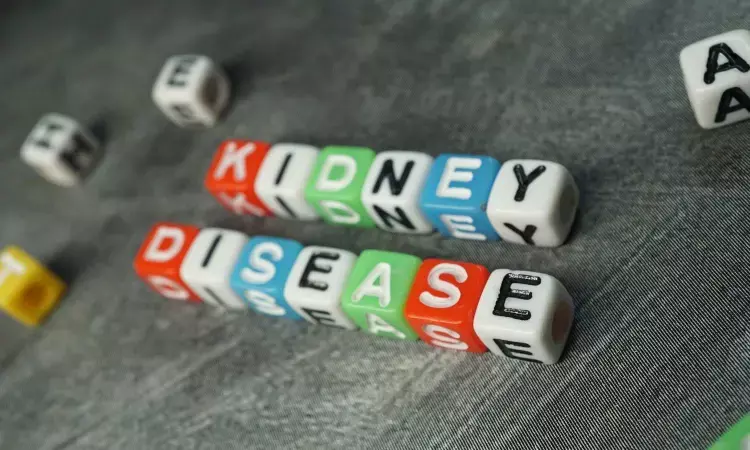- Home
- Medical news & Guidelines
- Anesthesiology
- Cardiology and CTVS
- Critical Care
- Dentistry
- Dermatology
- Diabetes and Endocrinology
- ENT
- Gastroenterology
- Medicine
- Nephrology
- Neurology
- Obstretics-Gynaecology
- Oncology
- Ophthalmology
- Orthopaedics
- Pediatrics-Neonatology
- Psychiatry
- Pulmonology
- Radiology
- Surgery
- Urology
- Laboratory Medicine
- Diet
- Nursing
- Paramedical
- Physiotherapy
- Health news
- Fact Check
- Bone Health Fact Check
- Brain Health Fact Check
- Cancer Related Fact Check
- Child Care Fact Check
- Dental and oral health fact check
- Diabetes and metabolic health fact check
- Diet and Nutrition Fact Check
- Eye and ENT Care Fact Check
- Fitness fact check
- Gut health fact check
- Heart health fact check
- Kidney health fact check
- Medical education fact check
- Men's health fact check
- Respiratory fact check
- Skin and hair care fact check
- Vaccine and Immunization fact check
- Women's health fact check
- AYUSH
- State News
- Andaman and Nicobar Islands
- Andhra Pradesh
- Arunachal Pradesh
- Assam
- Bihar
- Chandigarh
- Chattisgarh
- Dadra and Nagar Haveli
- Daman and Diu
- Delhi
- Goa
- Gujarat
- Haryana
- Himachal Pradesh
- Jammu & Kashmir
- Jharkhand
- Karnataka
- Kerala
- Ladakh
- Lakshadweep
- Madhya Pradesh
- Maharashtra
- Manipur
- Meghalaya
- Mizoram
- Nagaland
- Odisha
- Puducherry
- Punjab
- Rajasthan
- Sikkim
- Tamil Nadu
- Telangana
- Tripura
- Uttar Pradesh
- Uttrakhand
- West Bengal
- Medical Education
- Industry
Revised normative BP values for children show better discrimination of kidney disease risk

Researchers have found in new research that specialized post-discharge follow-up for AKI survivors was not associated with a lower risk of major adverse kidney events. However it was associated with a lower risk of death and increased prescriptions for some cardioprotective medications.
Analysis recently published in the American Journal of Kidney Diseases (AJKD) compared and contrasted the 2017 and 2004 American Academy of Pediatrics (AAP) childhood hypertension guidelines and showed higher levels of proteinuria in children with hypertensive range blood pressure (BP) with 2017 vs. 2004 blood pressure percentiles.
This comparison of the 2004 Fourth Report and the 2017 AAP CPG normative BP values and classification systems demonstrates important differences that will affect the diagnosis and treatment of hypertension in pediatric chronic kidney disease (CKD). Most importantly, there was substantial variability of 2017 BP percentiles around the same 2004 BP percentiles. The calculation of percentiles between the two guidelines do not directly map to each other which means that clinicians cannot confidently estimate a patient's 2017 BP percentile from their 2004 BP percentile alone. While on average, the 2017 CPG normative BP values placed participants into higher percentiles than the 2004 data, substantial heterogeneity was present: determining 2017-based percentiles from 2004-calculated percentiles is challenging without completely re-calculating, with the exception of very low and very high blood pressure levels.
The differences in BP classification presented in this analysis should be carefully considered as clinicians track and understand longitudinal BP control for individual patients. The authors recommend re-calculating previous BP percentiles using the 2017 CPG and basing treatment decisions on the reclassified BP stages. Clinicians should be aware that whereas re-calculating percentiles will yield more hypertension and higher BP percentiles in their patient population overall, this may not be true for individual patients given some subtle differences seen in the general pediatric population based on sex and age.
Similarly, if staging and percentiles of historic data are not re-calculated, there will likely be abruptly higher levels observed for those who were previously within the normal range based on the 2004 Fourth Report and are now being characterized using the 2017 CPG. Clinicians should also be aware that the dynamics are different between SBP and DBP percentiles. For SBP, in general, most percentiles will be higher using the 2017 CPG system (except for those that are very low or very high). For DBP, only BP levels higher than the 50th percentile by the 2004 system will yield higher percentiles by the 2017 CPG.
Reference:
Samuel A. Silver, Neill K. Adhikari, Nivethika Jeyakumar, Amit X. Garg, Chaim M. Bell, Ron Wald, Published:December 12, 2022 DOI: https://doi.org/10.1053/j.ajkd.2022.10.011
Dr Kamal Kant Kohli-MBBS, DTCD- a chest specialist with more than 30 years of practice and a flair for writing clinical articles, Dr Kamal Kant Kohli joined Medical Dialogues as a Chief Editor of Medical News. Besides writing articles, as an editor, he proofreads and verifies all the medical content published on Medical Dialogues including those coming from journals, studies,medical conferences,guidelines etc. Email: drkohli@medicaldialogues.in. Contact no. 011-43720751


